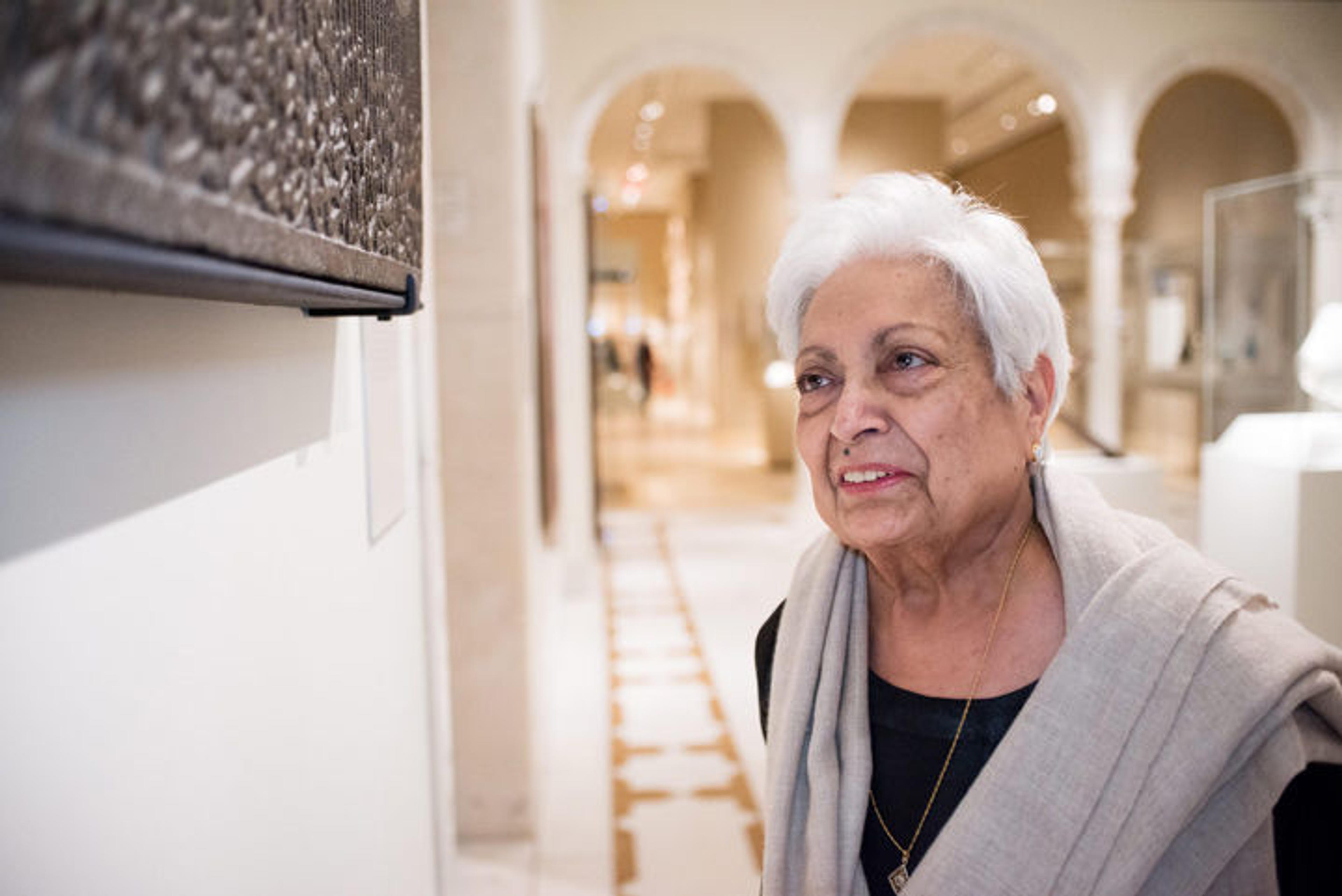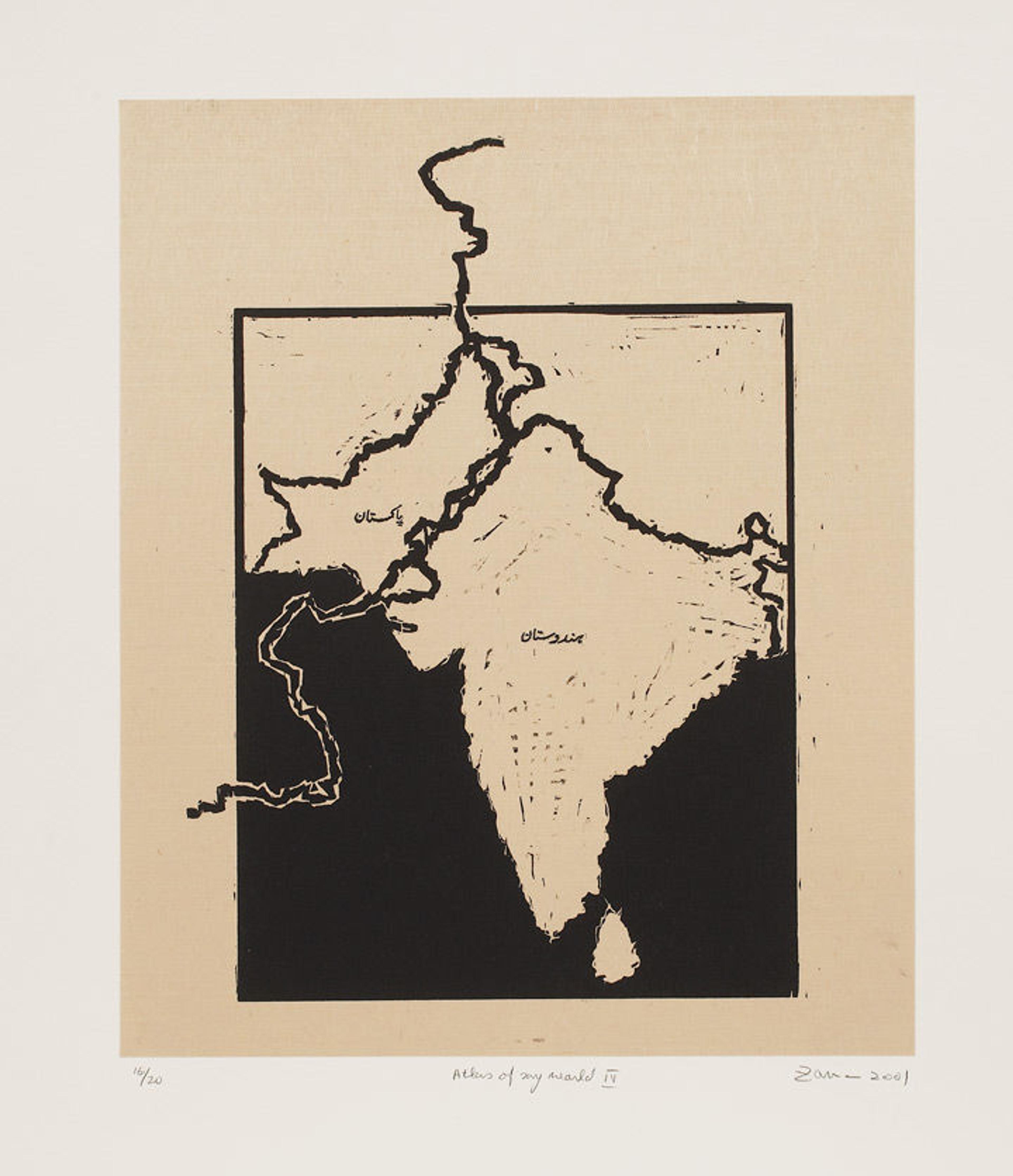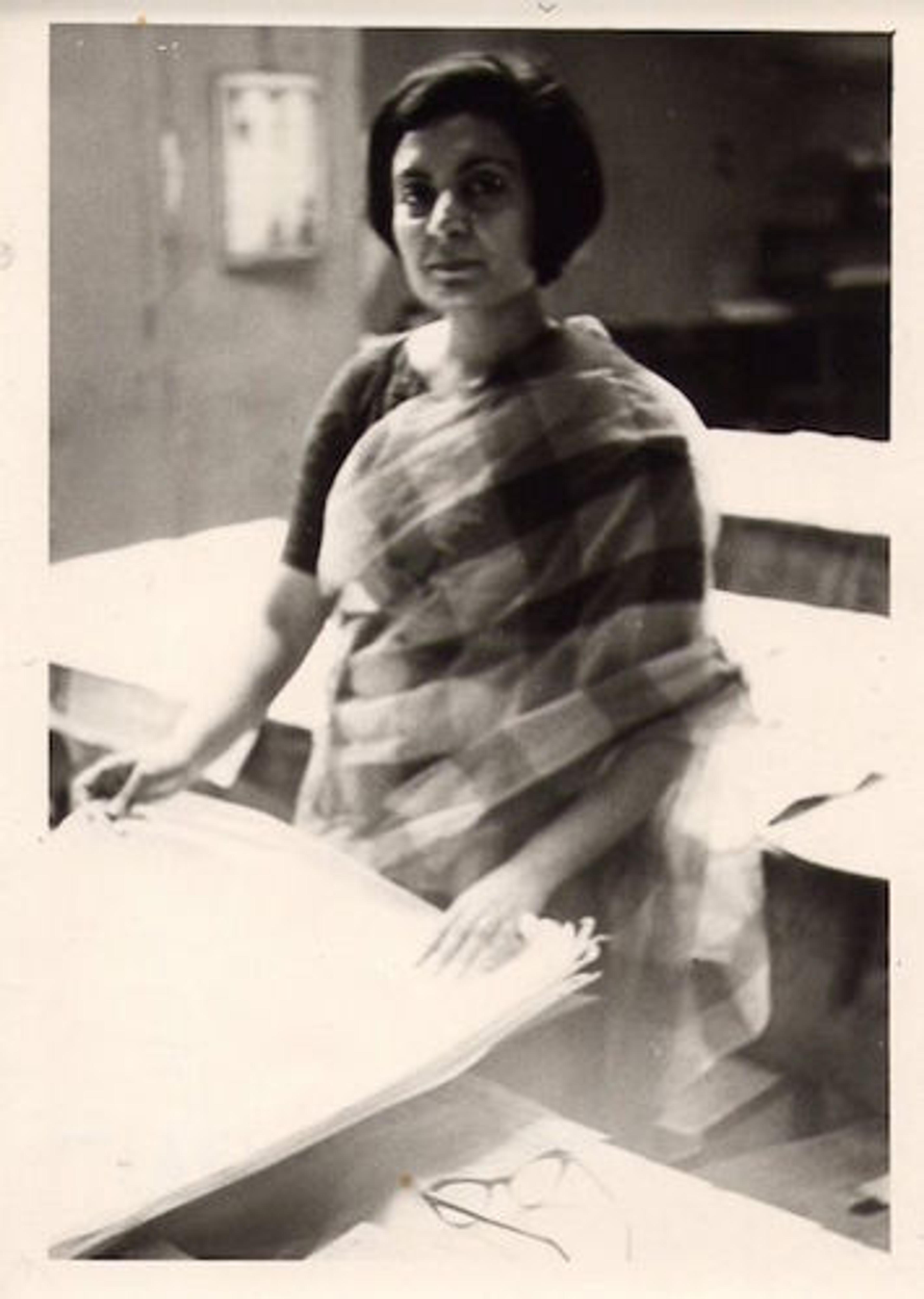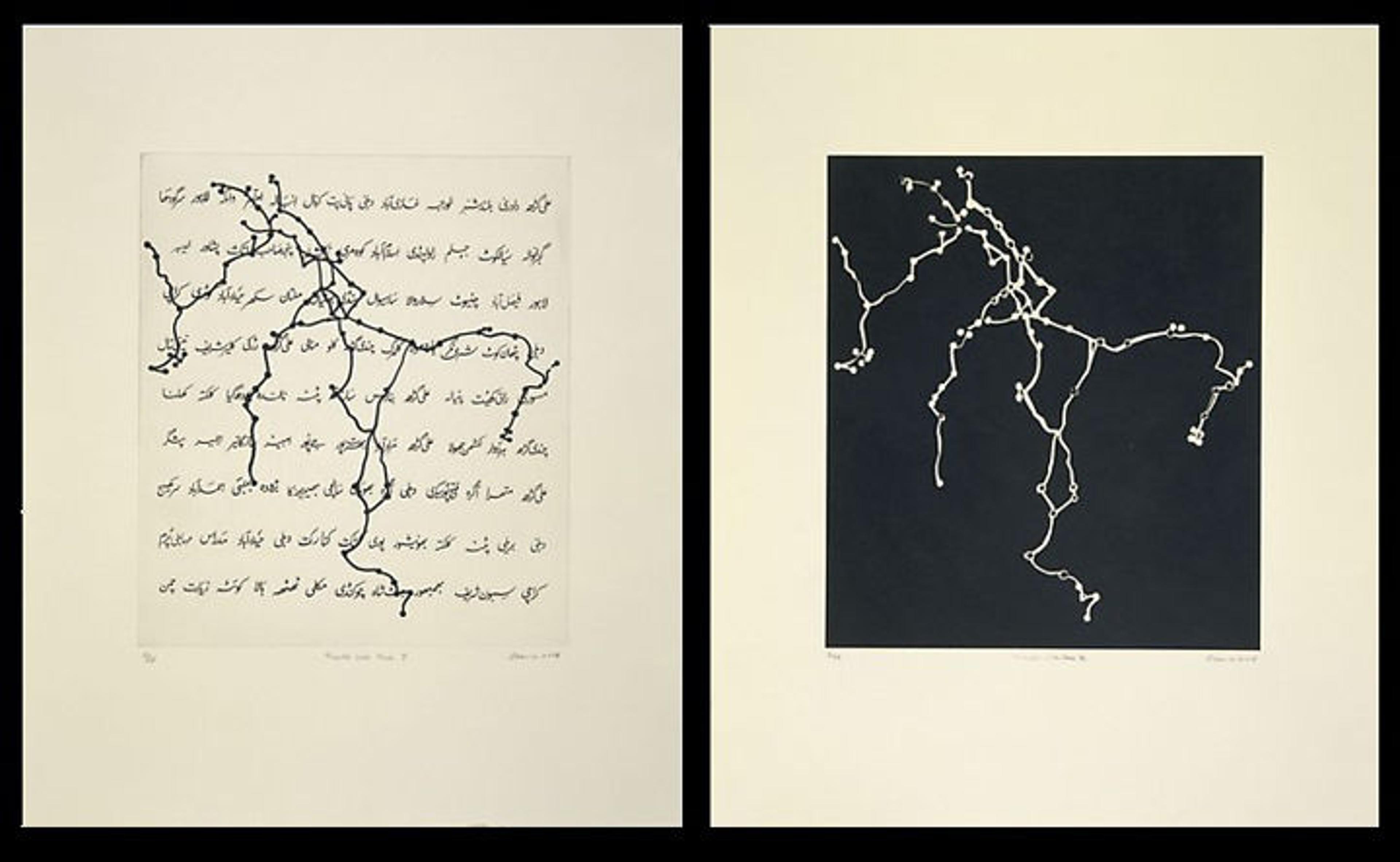Seven Questions for Zarina Hashmi

From The Artist Project, Season 1, "Zarina Hashmi on Arabic calligraphy"
«Zarina Hashmi (born 1937, in Aligarh, India) is one of three printmakers featured in the current exhibition Workshop and Legacy: Stanley William Hayter, Krishna Reddy, Zarina Hashmi, on view at The Met Fifth Avenue through March 26. After the partition of India in 1947, Zarina and millions of other Muslims were displaced to Pakistan. While her family relocated to Karachi in the 1950s, Zarina married and began a life abroad, traveling with her husband to Japan, Germany, Thailand, and France, among other places. In 1976 she settled in New York, but has never forgotten her homeland. I recently sat down with her to discuss her education, artistic process, and inspirations.»
Courtney Stewart: Your work often centers on the theme of home. Where do you most feel at home? Has New York City become your home?
Zarina: Somewhere along the line I decided to make my own life the subject of my work, but I didn't realize how people would respond to that. Some people who have come and settled in the United States don't look back, but I'm not one of them. They are lucky! New York is not my home, this is someone else's home. I’ve lived here for 40 years but my identity is basically that of an exile.
The biggest loss for me is language, specifically poetry. Before I go to bed lately, thanks to YouTube, I listen to the recitation of poetry in Urdu. I jokingly say I have lived a life in translation.

Zarina (American, b. India, 1937). I Went on a Journey III, 1991. Bronze with patina, 10.5 x 5 x 5 in. On loan from Zarina
Courtney Stewart: What do you think is the role of the artist in society?
Zarina: I think we are witnesses to the times we are living in. My interest in politics is because I am a child of the [1947] partition. People were living together, and they were in such a hurry to do the partition. [British lawyer Cyril John] Radcliffe came in—he didn't know the country, he didn't know that Lahore is right next to Amritsar—he just sat at a table and drew a line, and sometimes the line goes right through a house and part of the house is in India and part of the house is in Pakistan. It is the greatest tragedy of the Indian subcontinent. I do remember it. I saw villages burning around Aligarh.
The title Atlas of My World came from Adrienne Rich's book of poems Atlas of a Difficult World. Both works are about the same thing.

Zarina Hashmi (American, b. India, 1937). Atlas of My World IV, 2001. Woodcut with Urdu text printed on Indian handmade paper, sheet size: 25.5 x 19.5 in. Promised gift from Zarina
Courtney Stewart: Do you have any figures in art history that you look up to?
Zarina: I would say Rembrandt and Dürer. I lived in Germany and I loved Dürer's work. I went to Nuremberg for the 500th anniversary of his birth [in 1971], and I bought a couple of prints, including the one hanging there [gestures to a print of Knight, Death, and the Devil]. And you know, he didn't make any corrections while he was carving!
I admire Rembrandt very much as well. I discovered his work in the Morgan Library. They have a wonderful collection.
Courtney Stewart: What was your training in printmaking like at Atelier 17?

Zarina: I always say that I came of age in France; I lived there for four years. Mr. [William Stanley] Hayter was so good to me. I always called him Mr. Hayter. I walked in [to Atelier 17] with a couple of woodcuts I had done in Japan, and I said, "I have never been to an art school, and I've studied science," and he said, "I have never been to an art school, I'm a science student, too!" He understood; his thing was chemistry. He was a great teacher. He gave me the freedom that I could do anything.
Left: Zarina at Atelier 17 in Paris, 1960s. Photo courtesy of Krishna Reddy
Courtney Stewart: What's the best piece of advice you've been given?
Zarina: I used to know a Russian writer who lived in Delhi and was married to an Indian woman. He looked at my work and just said, "Keep on working. Just keep on working. You will find a language for yourself."
I was in college at the time. I really didn't know where I was going because I didn't go to an art school, so nobody told me what to do. But my work was inspired by the poetry—Urdu poetry that everybody in my family read. We used to play hide and seek in our book storage, and I think that is how I got interested in printmaking, because I was looking at prints before I could read or write.

Zarina Hashmi (American, b. India, 1937). Travels with Rani, 2008. Travels with Rani I: intaglio printed in black on Arches Cover buff paper; Travels with Rani II: woodcut printed in black on Okawara paper and mounted on Arches Cover buff paper, sheet size: 24 x 20 in. Promised gift from Zarina
Courtney Stewart: What memorable responses have you had to your work?
Zarina: I don't mind criticism. Somebody who was a student of my father wrote a review on my work and said that "her creative powers are dead." So I said, "I haven't even started!" It's O.K., though, criticism doesn't bother me.
Everybody can draw, you know—skills don't make art. That is the least important part. I've been a teacher for 25 years in this country, so I can teach the skills. Ideas make art. There are lots of people who can't draw but they can make big art—great art, because it comes from ideas. You can teach skills but you can't teach ideas.
Courtney Stewart: What do you hope people will bring away from your work?
Zarina: I have had people come to my show and start to cry. I always ask them why, and usually they say "that is our story also." A lot of them were people who were exiles from their own country: Holocaust survivors, or people who had the desire to return home. I realize that if you tell your story and if someone can come and cry on your shoulder, I think that is sharing.
I don't do anything that is not part of my own life. If I make a prayer bead, I use it; it's not something that is decoration. I do believe in a spiritual life, and I'm not embarrassed by that. It's how I am.

Zarina Hashmi (American, b. India, 1937). Tasbih, 2001. Sandalwood strung with copper wire, 500 units, each unit: 1 x .625 x .5 in.; total length: 258 in. On loan from Zarina
Related Links
Workshop and Legacy: Stanley William Hayter, Krishna Reddy, Zarina Hashmi, on view at The Met Fifth Avenue through March 26, 2017
View all blog posts related to this exhibition.
The Artist Project, Season 1: "Zarina Hashmi on Arabic Calligraphy"
Courtney Stewart
Courtney A. Stewart is the senior research assistant in the Department of Islamic Art.